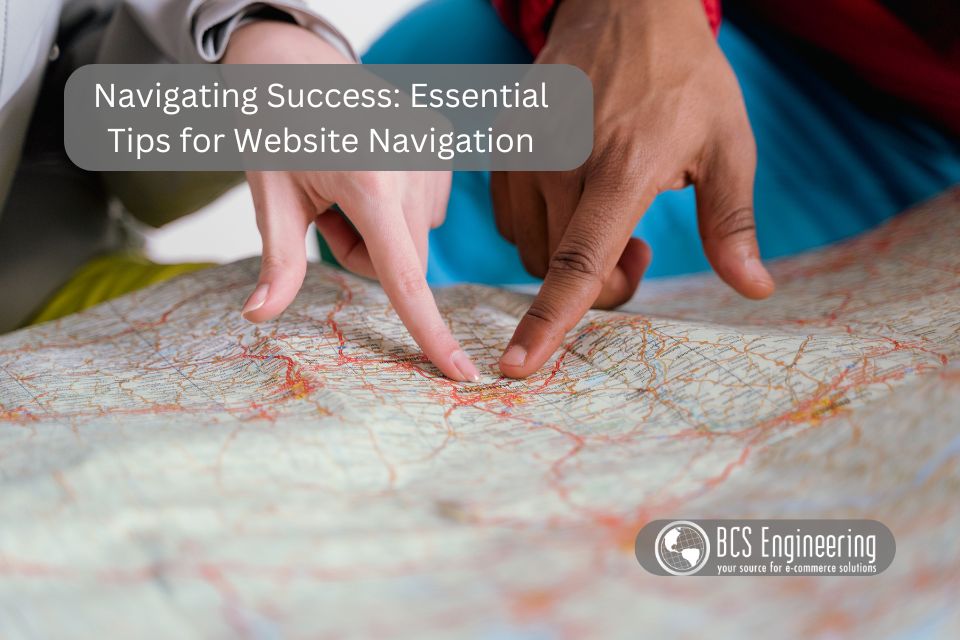When it comes to creating a website that turns visitors into customers, quality website navigation is essential. Good navigation helps visitors find what they are looking for quickly and efficiently, reducing frustration and increasing the likelihood of conversions. In this blog, let’s discuss essential techniques to improve your site navigation and, in turn, create better user experiences.

The Importance of Good Navigation
Website navigation serves as a roadmap, guiding users to various sections of your site. Effective navigation:
- Improves User Experience: Simplifies the user journey, making it easier for visitors to find information.
- Reduces Bounce Rate: Keeps visitors engaged by providing easy access to relevant content.
- Enhances SEO: Search engines prefer well-structured websites, improving your site’s ranking.
- Increases Conversions: Aids users in finding products or services, leading to higher conversion rates.
Key Elements of Good Navigation
To create an intuitive navigation system, consider incorporating the following key elements:
Clear and Concise Menu Labels
Menu labels should be simple and self-explanatory. Clear, simple language helps users easily understand where each link leads, making navigation more intuitive. Avoid jargon and keep labels short to help users quickly understand their purpose. For example, when titling a navigation button for your company story, use “About Us” instead of something longer like “Learn More About Our Company’s Journey.” “About Us” is short and easy to understand, while the longer title is unnecessarily lengthy and potentially confusing.
Logical Hierarchy
Organize content in a hierarchical structure to improve user experience and navigation. Group related pages under relevant categories, creating a clear and logical pathway for users to follow. This structure helps users quickly find the information they need by allowing them to drill down from general categories to more specific topics. For example, a clothing website might have main categories like “Men,” “Women,” and “Kids,” with subcategories under each, such as “Tops,” “Bottoms,” and “Accessories.” By structuring your content this way, you make it easy for users to navigate deeper into your site, discover relevant content, and engage more fully with your offerings.
Search Functionality
Include a robust search feature to help users find specific information quickly. This feature is essential for improving the overall user experience, as it allows visitors to bypass browsing and directly access the content they need. Ensure the search bar is prominently placed, such as at the top of the page or in a clearly visible area of the header, to make it easily accessible. Additionally, invest in a search algorithm that delivers accurate and relevant results, incorporating features like autocomplete suggestions, filters, and spelling corrections. This will not only save users time but also increase their satisfaction and likelihood of returning to your site.
Breadcrumb Navigation
Breadcrumbs provide a trail for users to follow back to their starting or previous pages, enhancing navigation by showing a clear path of how they arrived at their current location. This feature is particularly useful for websites with multiple levels of content, such as online shops with various product categories or blogs with extensive archives. Breadcrumbs help users understand the site’s structure, allowing them to backtrack easily without having to use the browser’s back button repeatedly. Additionally, breadcrumbs can improve SEO by creating internal links that search engines can crawl, thereby enhancing the site’s overall indexing and visibility.
Responsive Design
With the increasing use of mobile devices, ensure your navigation is responsive to provide a seamless experience across all screen sizes. Responsive navigation automatically adapts to different devices, maintaining usability whether the user is on a smartphone, tablet, or desktop computer. Menus should be easy to use on both desktop and mobile devices, employing touch-friendly elements like larger buttons and simplified layouts for smaller screens. Implement mobile-specific features such as collapsible menus or hamburger icons that expand when tapped, allowing for a clean and uncluttered interface.
Want to learn more?
Effective navigation is critical to a website’s success.Listen to our latest eCommerce Made Easy Podcast where Carrie goes over exactly how much quality navigation can impact your customer conversions, as well as
